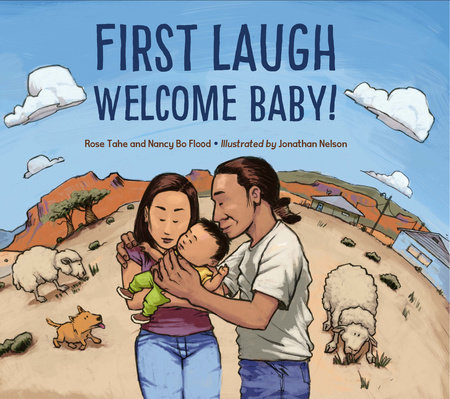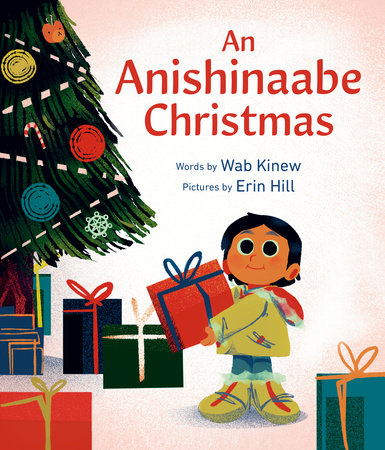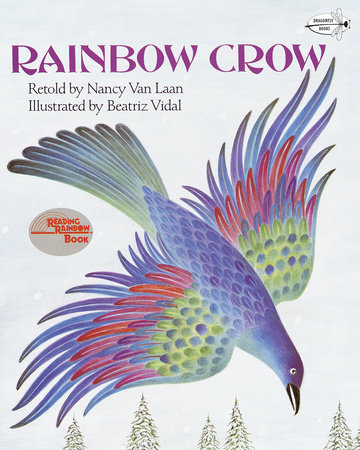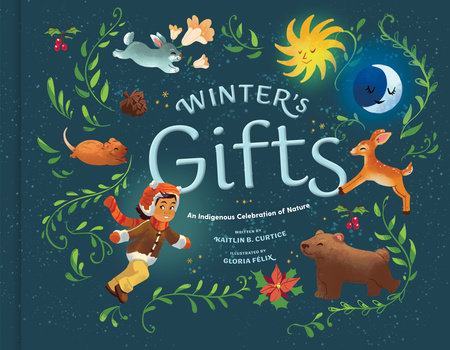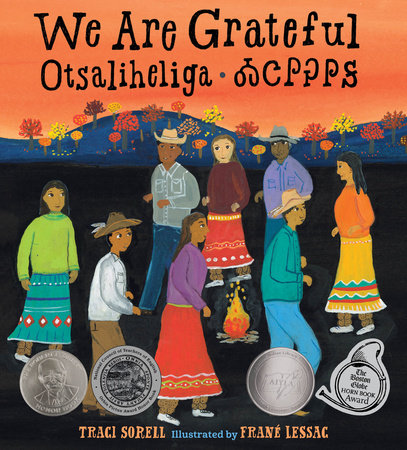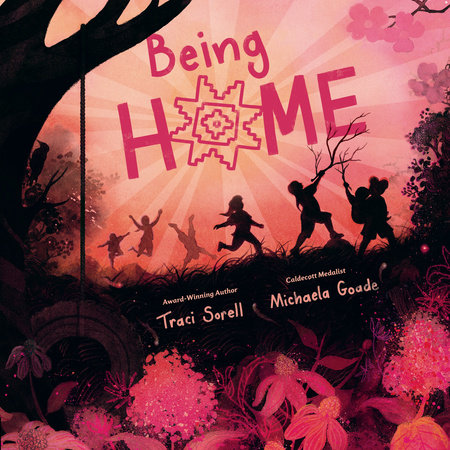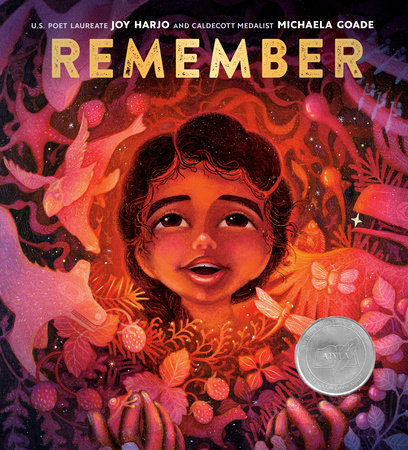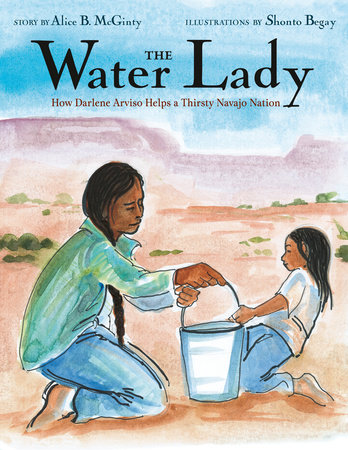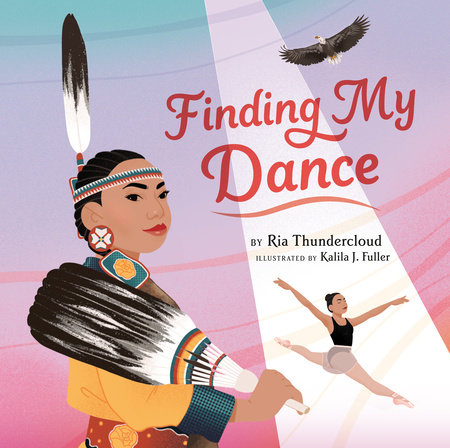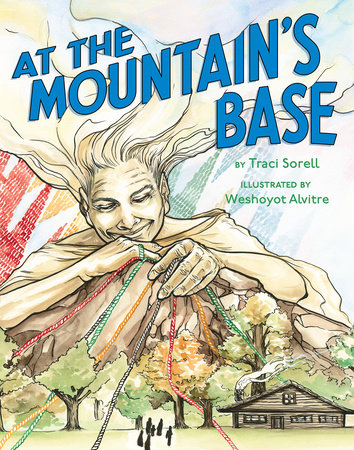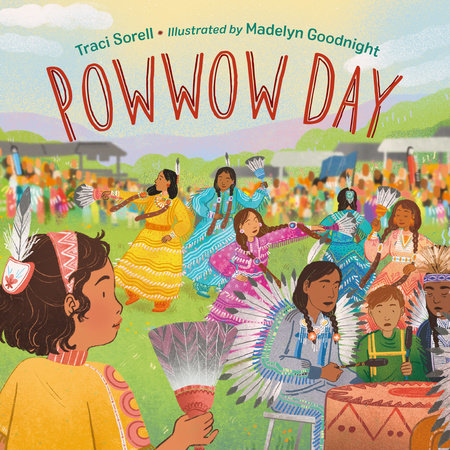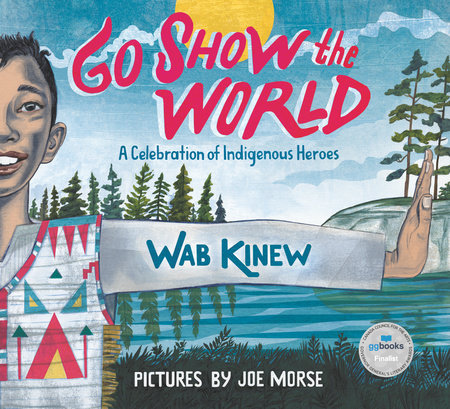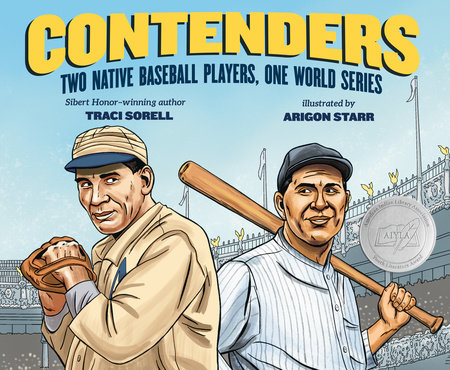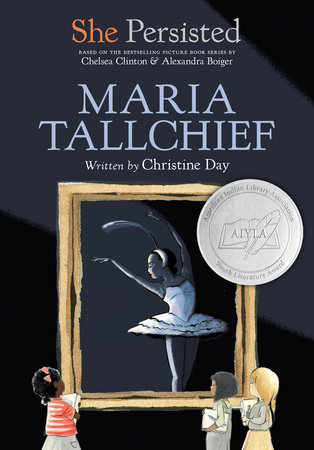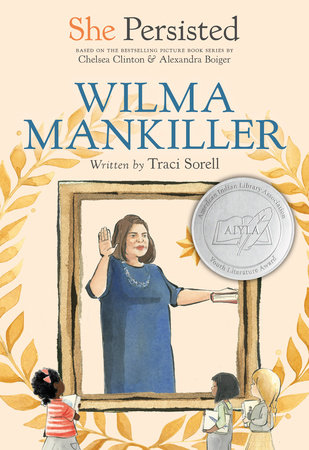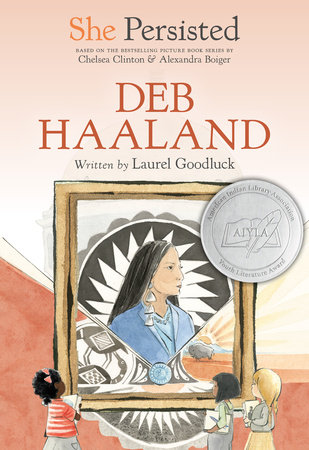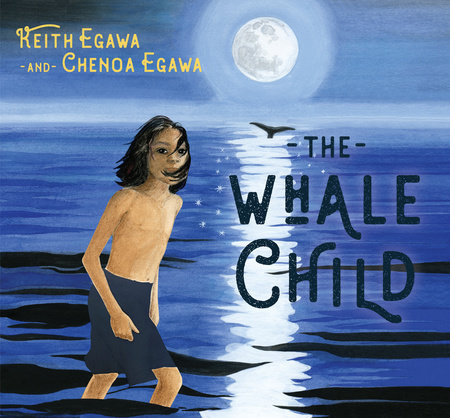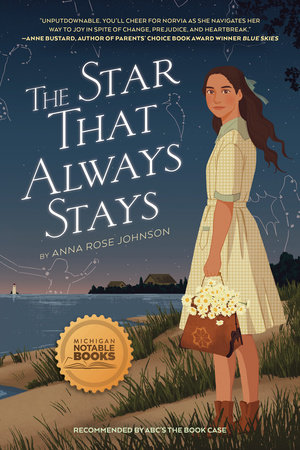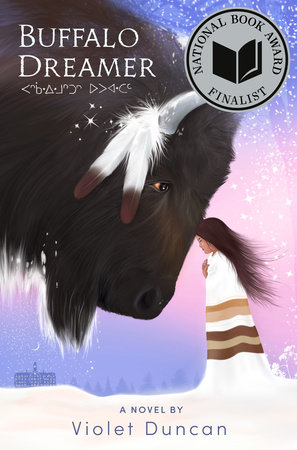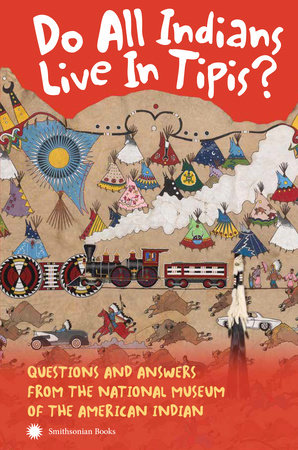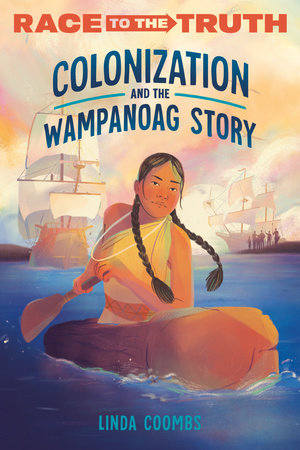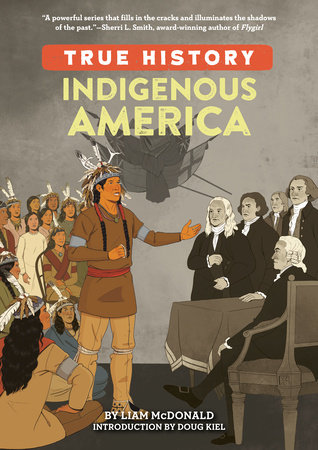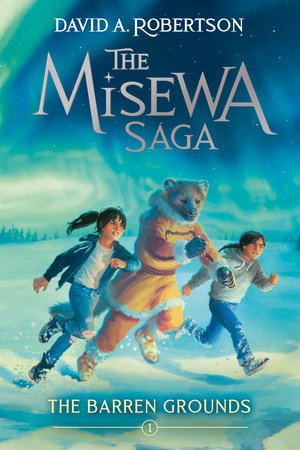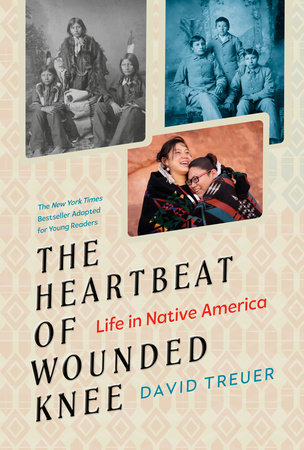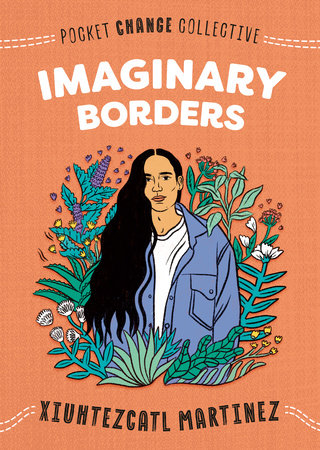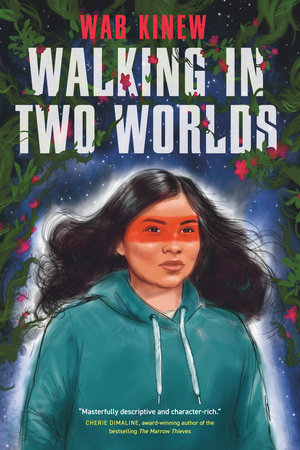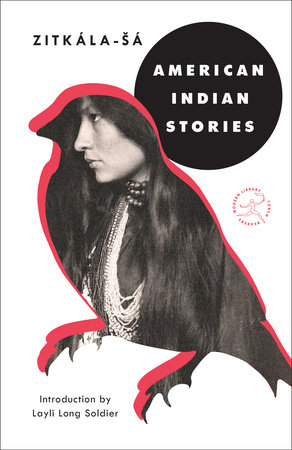36 Children’s & YA Books That Celebrate Native American Heritage
by Olugbemisola Rhuday-Perkovich
I traveled in and out of the U.S. often during my childhood, but was in Silver Spring, Maryland, at four years old, in time to celebrate a “First Thanksgiving” with my kindergarten class. I remember the boys building a fort with those cardboard brackish-looking giant blocks, while us girls, as “Pilgrim women,” wore dresses and tore hunks of baked chicken into smaller bits for the big meal. I don’t know which is sadder: the fact that I, along with my (not that many) Black classmates were playing the roles of white colonizers in this theatre of the absurd, or that I don’t remember who played the Indians. I don’t even remember if anyone did; they are erased from my memory, as Native and Indigenous people so often are erased from the narrative of the American past, present, and future.
On Indian Country Today, Christina Rose writes, “Without guidance, too many teachers may celebrate Native American Heritage Month in the only ways they know how: paper bag vests and feathers, classroom pow wows, and discussions on who Indians were.” Many of us who celebrate the Thanksgiving holiday would be hard pressed to know who the Wampanoag people were and are, what the Haudenosaunee, or Iroquois, Thanksgiving Address is, or that government policy forced “relocation” of Native Americans away from their productive farmland and the crops, like corn and pumpkin, that remain symbols of the Thanksgiving holiday today.
November, designated as Native American Heritage Month, offers an opportunity for all of us to become more educated about that history and current state of affairs. Like all stories, Native stories are not a single story of defeat, bows and arrows, or of “the past.” They include stories of joy, of cultural pride, of meeting everyday challenges, fun, and celebrations of family and friendship.
-
Picture Books
-
First Laugh – Welcome, Baby!
Available from:A lovely celebration and affirmation of Navajo tradition, this story centers on a family eagerly awaiting a baby’s first laugh, which initiates the family’s formal welcome of the baby into their clans. The scene moves from the baby’s home in the city to its grandparents’ home in the country, and the whole family is thrilled when, at long last, they hear the baby laugh for the first time.
(Ages 2 – 5)Also available from: -
An Anishinaabe Christmas
Available from:This beautiful book from beloved Indigenous author Wab Kinew celebrates the holiday season through an Anishinaabe lense. Baby and his mother are going to the Rez for Christmas. Along the way Baby learns the legends, vocabulary, and traditions that have been in his family for generations.
(Ages 3 – 7)Also available from: -
Métis Like Me
Available from:Young readers interested in Indigenous cultures will want to read this upbeat picture book featuring Métis crafts, food, dances, and songs. When one child feels like they don’t fit in, they discover the joy of learning about their heritage. This beautiful book celebrates Métis culture while encouraging all readers to embrace their roots.
(Ages 3 – 7)Also available from: -
Rainbow Crow
Available from:Stunning illustrations and a solid moral message make this Lenape legend a feast for the eyes and ears. When the crow gave fire to its forest friends, the once-beautiful bird lost its lovely singing voice and colorful feathers as a result. This moving story teaches readers that sometimes you must sacrifice to help others.
(Ages 3 – 7)Also available from: -
Winter's Gifts
Available from:Winter's Gifts tells the story of Dani, a young Potawatomi girl, and her family who embrace the slow pace of winter. Despite her schoolmates' skepticism about the Earth's generosity, Dani, with the support of her family and Creator, bravely educates her friends about winter's blessings: rest, reflection, and appreciation.
(Ages 3 – 7)Also available from: -
Keepunumuk
Available from:Keepunumuk tells the story of the first Thanksgiving from the Wampanoag Nation’s point of view. Ships bring newcomers who don’t know the land’s language. Weeâchumun (corn) visits the First Peoples in a series of dreams, asking them to help the newcomers, feed them, and teach them how to survive. It’s a beautiful and much-needed holiday story that celebrates the culture and generosity of the Wampanoag Nation.
(Ages 3 – 7)Also available from: -
We Are Grateful: Otsaliheliga
Available from:This picture book introduces readers to otsaliheliga, the word that members of the Cherokee Nation say to express gratitude. The expression is used to celebrate the small joys of family life and the beauty of the natural world throughout the year, as well to show appreciation of loved ones.
(Ages 3 – 7)Also available from: -
Loaf the Cat Goes To The Powwow
Available from:Loaf the cat, who adores playing with her boy, embarks on an adventure to find him when he vanishes, eventually discovering him at a lively powwow. She joyfully watches him dance, creating a heartwarming moment he'll always cherish.
(Ages 3 – 7)Also available from: -
Being Home
Available from:A Native American girl and her family are moving, and she is excited and happy. They are moving back to their ancestral land. As they make the long drive, the girl dreams about the life, family, and fun that waits for her. This joyful book celebrates the connection that people often feel toward the places their ancestors called home.
(Ages 4 – 8)Also available from: -
Remember
Available from:Two award-winning creators combine their talents in this beautiful picture book. The gentle poem and stunning artwork encourage readers of all ages to remember what makes them unique. It celebrates heritage, family, and nature and is the perfect addition to every home library.
(Ages 4 – 8)Also available from: -
The Water Lady
Available from:Access to clean, running water is something that most people in our country take for granted. But Cody’s family relies on the services of an elderly woman to get water. This is a heartfelt and eye-opening story about a woman who gives back to her community in a necessary and meaningful way.
(Ages 4 – 8)Also available from: -
Finding My Dance
Available from:Dance, Indigenous culture, and a personal journey make this stunning picture book memoir a must-read. Ria Thundercloud started dancing as a child and learned many dance forms, but she always returned to her roots. Now, she makes a living as a professional dancer. Beautiful illustrations, the warm narrative, and Ria’s reasons for dancing will uplift and inspire young readers.
(Ages 4 – 8)Also available from: -
At the Mountain's Base
Available from:This lyrical picture book illustrates the everyday lives and traditions of a Cherokee family as they wait for their loved one, a pilot, to return home from war. A celebration of family and tradition as well as Native American service members, it’s an excellent addition to home and school libraries.
(Ages 4 – 8)Also available from: -
Kapaemahu
Available from:Anyone who has visited Hawaii will love this Indigenous legend from the islands. Four Mahu (two-spirit people) from Tahiti travel to Waikiki to teach the locals about medicine and healing. The islanders build a monument in their memory that visitors can still see on Waikiki Beach. The text appears in English and the Niihau form of Hawaiian, making it an excellent book for anyone interested in the islands’ history.
(Ages 4 – 8)Also available from: -
Powwow Day
Available from:Head to the powwow for a celebration of culture, community, and friendship with this gorgeous, modern picture book. River is recovering from an illness and doesn’t feel well enough to dance at the powwow. Thankfully, she has a wonderful friend who suggests the perfect solution.
(Ages 4 – 8)Also available from: -
Kindred Spirits: Shilombish Ittibachvffa
Available from:This nonfiction picture book tells the heartwarming true story of how groups of people living on separate continents supported each other. Even though they had never met each other, the Choctaw Nation, the Irish, the Navajo Nation, and the Hopi tribe showed each other compassion and generosity over the centuries. This is a beautiful story of how people can come together in their times of need.
(Ages 5 – 8)Also available from: -
Tallchief: America's Prima Ballerina
Available from:This inspiring story of Maria Tallchief, who grew up on an Osage Indian reservation and went on to become a world-renowned prima ballerina, will appeal to any young reader with a passion (or two).
(Ages 5 – 8)Also available from: -
Go Show the World
Available from:Go Show the World is a tribute to historic and modern-day Indigenous heroes, including Tecumseh and Sacagawea. With lyrical text, Wab Kinew's book introduces readers to both popular and lesser-known Indigenous people in the U.S. and Canada. His message rings true throughout: We are people who matter.
(Ages 5 – 9)Also available from: -
Contenders
Available from:Charles Bender and John Meyers grew up on different reservations and played professional baseball for different teams. In 1911, they became the first two Native Americans to play against each other in the World Series. This picture book shows readers how they overcame roadblocks, misunderstandings, and prejudices to reach their dreams.
(Ages 6 – 9)Also available from:
-
Chapter Books & Middle Grade
-
She Persisted: Maria Tallchief
Available from:If you’ve read Maria Tallchief’s autobiographical picture book, you’ll want to pick up this chapter book that dives deeper into her life. From her childhood to the stage, readers will learn about Maria’s determination, hard work, and courage that helped her become America’s first prima ballerina.
(Ages 6 – 9)Also available from: -
She Persisted: Wilma Mankiller
Available from:Young readers will love this chapter book biography of Wilma Mankiller, the first female Principal Chief of the Cherokee Nation. Wilma’s ancestors walked the Trail of Tears, and she witnessed many injustices against her people. Unsurprisingly, she became passionate about preserving the heritage of the First Nations and fighting for their rights.
(Ages 6 – 9)Also available from: -
She Persisted: Deb Haaland
Available from:Deb Haaland, an enrolled Pueblo Laguna member, was one of the first two Native American women elected to Congress, representing New Mexico's 1st District. In 2021, she made history by becoming the first Native American cabinet secretary as President Biden's Secretary of the Interior. This chapter book biography tells the story of her amazing life.
(Ages 6 – 9)Also available from: -
The Whale Child
Available from:A look at the changing environment written by two Indigenous authors, The Whale Child tells the story of Shiny, a whale child who is turned into a boy in order to go to land and alert humans about the harm facing the oceans. On land, Shiny meets Alex, a Coast Salish girl who learns that the living spirit of water exists everywhere. With Shiny's help, Alex promises to teach future generations about the importance of protecting Mother Earth. This illustrated chapter book is perfect for early middle grade readers.
(Ages 7 – 10)Also available from: -
The Star That Always Stays
Available from:Norvia is proud to be Ojibwe, but when her mother remarries, she's forced to keep her heritage a secret from her new family. Both humorous and heartbreaking, this beautiful coming-of-age story inspired by the author's own family history thoughtfully addresses assimilation, racism, blended families, and growing up.
Also available from: -
Lei and the Fire Goddess
Available from:Hawaiian folklore, an angry goddess, and a kidnapped best friend combine into an action-packed adventure novel that celebrates Native Hawaiian heritage. With her friend in danger and a curse running rampant, Anna will do anything to set things right. However, the fire goddess Pele makes Anna’s quest more difficult by planting monsters, magic, and mayhem in her path.
(Ages 8 – 12)Also available from: -
Buffalo Dreamer
Available from:Summer loves spending time with her family in Alberta, Canada. But when she starts having unsettling dreams about the residential schools that her grandfather attended, she learns the disturbing truth about her family’s past in the province. Later, she participates in a town rally and shares her hope for a better future. This heart-wrenching historical novel is based on the author’s family history.
(Ages 10+)Also available from: -
Do All Indians Live in Tipis? Second Edition
Available from:In this illustrated guide by experts from the Smithsonian’s National Museum of the American Indian, nearly 100 common misconceptions about Native American customs, culture, and history are debunked. Covering topics from totem poles to Tonto and including questions like the authenticity of the Manhattan sale for beads and trinkets and the prevalence of tipis, readers will uncover the truth about Indigenous peoples of North America from Native authors themselves.
(Ages 10+)Also available from: -
Colonization and the Wampanoag Story
Available from:Every story has two sides, and most people have only heard Christopher Columbus’s version of events. Linda Coombs, an author and historian from the Wampanoag Tribe of Aquinnah, delivers the other half of the story with this captivating nonfiction book. Readers will learn about America’s colonization from the Wampanoag point of view and how their resilience helped them survive the turmoil the European explorers brought.
(Ages 10+)Also available from: -
Indigenous America
Available from:This comprehensive and easy-to-read nonfiction book teaches young readers the Indigenous history of America. It covers First Nations history from the time of the Haudenosaunee (Iroquois) Confederacy to European explorers’ arrival and the resulting wars, disease, and mass murders. It also discusses topics such as Indigenous legends, stories, genocide, and advocacy in modern times.
(Ages 10+)Also available from: -
The Misewa Saga Series
Available from:Readers looking for a Narnia-like adventure based on Indigenous legends will love this action-packed series from a member of the Norway House Cree Nation in Canada. It’s about two Native American children in foster care who bond over their shared heritage. They find a portal to another dimension and get swept up in an unforgettable journey of courage and survival.
(Ages 10+)Also available from: -
Killers of the Flower Moon: Adapted for Young Readers
Available from:True crime and Indigenous history intersect in this young reader’s adaptation of the adult book by the same name. In 1920s Oklahoma, the Osage Nation thrived and became the wealthiest people per capita worldwide. But when the Osage started getting murdered in shocking numbers, the FBI stepped in to investigate. The Osage and FBI pieced together who was behind the killings and exposed a bone-chilling conspiracy.
(Ages 10+)Also available from:
-
Young Adult
-
The Heartbeat of Wounded Knee (Young Readers Adaptation)
Available from:Adapted for younger readers from the adult title, this essential nonfiction book looks at Native American culture today. It highlights current efforts to preserve Indigenous culture, language, and traditions and offers encouragement through the lived experiences of First Peoples.
(Young Adult)Also available from: -
Imaginary Borders
Available from:Hip hop artist and environmental activist Xiuhtezcatl Martinez shares his passion for climate change in this short but powerful book. It’s an excellent book to jump-start your teen’s education about this critical issue.
(Young Adult)Also available from: -
Walking in Two Worlds
Available from:Modern Native American culture collides with virtual gaming in this speculative fiction series by the bestselling and award-winning author of The Reason You Walk. Bugz and Feng become friends in real life and the virtual world of the game they both play. But as the virtual and real worlds spill into each other, Bugz and Feng must navigate the challenges of friendship, family, and community.
(Young Adult)Also available from: -
Hearts Unbroken
Available from:New York Times bestselling and award-winning author Cynthia Leitich Smith delivers a heartfelt portrayal of the challenges faced by Indigenous teens today. Louise Wolfe must decide how much of her heart to give away to a boy while her town erupts into anger over an inclusive production of The Wizard of Oz. And don’t miss the follow-up novel Harvest House, publishing in April 2023!
(Young Adult)Also available from: -
American Indian Stories
Available from:Born in 1876 and raised on the Yankton Sioux Reservation, Zitkála-Šá was eight years old when Quaker missionaries appeared, offering children a free education if only they were to leave their parents — and, implicitly, abandon their cultural roots. Expecting adventure, Zitkála-Šá begged her mother to go, and though she was a model student, she refused to accept the estrangement, going on to become an activist and founded the National Council of American Indians. This collection of her memories and work is ideal for teen readers, parents, and educators.
(Young Adult)Also available from:
More resources:
- How To Tell The Difference: A Guide for Evaluating Children’s Books for Anti-Indian Bias
- Vision Maker Media
- A Broken Flute: The Native Experience in Books for Children
- American Indians in Children’s Literature
Editor’s note: This article was originally published in 2017 and updated in 2024.

